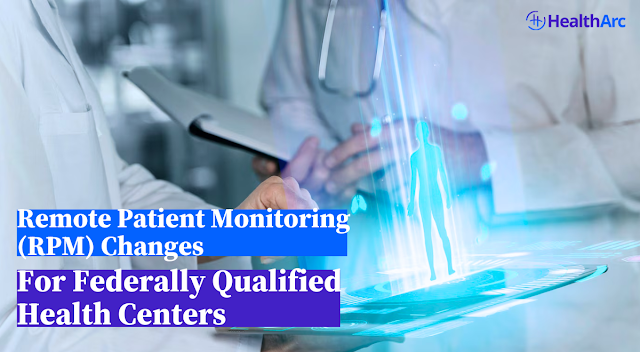Best Remote Health Monitoring Companies Improving Healthcare in 2025
As the healthcare climate continues to transform, Remote Health Monitoring (RHM) has emerged as a key pillar in managing chronic diseases, reducing hospital readmissions, and improving patient outcomes. Remote health monitoring companies have made significant inroads in facilitating this change by combining new technology and scalable care models to give providers, payers, and patients immediate access to health data and interventions.
In this blog, we will discuss the best remote health monitoring companies showing up in 2025, their key products, and how these companies are pioneering the next frontier of virtual care.
Why Remote Health Monitoring is More Important than Ever?
The increasing incidence of chronic diseases, aging demographics, and rising costs of healthcare have all contributed to the growing demand for smart and accessible delivery of care. Remote health monitoring provides the means to:
• Monitor vital signs and symptoms in real-time
• Decrease the number of itchy ER visits and subsequent hospital admissions
• Support medication adherence and lifestyle management
• Promote early and personalized interventions
• Leverage value-based care and better reimbursement models
Remote Patient Monitoring (RPM), Remote Therapeutic Monitoring (RTM), and Chronic Care Management (CCM) programs are all supported and paid for by CMS and many commercial payers, providing motivation to use these tools at scale.
Top Remote Patient Monitoring Companies to Know In 2025
1. HealthArc
HealthArc is a prominent remote patient monitoring and care coordination platform for healthcare providers, ACOs, and payers. It is known for its scalability, seamless integration, and data analytics capabilities as a complete ecosystem for remote management of chronic and acute patients.
Key Features:
FDA approved Bluetooth devices (BP cuffs, glucometers, pulse oximeters)
Real-time vitals monitoring and alerts
Automated patient onboarding and communication
AI-assisted care coordination and insights
Supports RPM, RTM, CCM, and TCM
Why It Stands Out:
HealthArc provides end-to-end program management that optimizes provider workload, while maximizing reimbursement and outcomes. Their solutions are customizable and work well in a multispecialty environment.
2. Philips Healthcare (Philips Remote Patient Monitoring)
Philips has been a leader in healthcare technology for a long time. Thus, its contemporary remote patient monitoring solutions have innovated remote care by leading hospital to home transitions and chronic conditions.
Key Features:
FDA approved Remote Monitoring Devices
Integrated telehealth platforms
Clinical dashboards and population health management
Data analytics and predictive modeling
Why It Stands Out:
Philips uniquely combines their depth of hospital knowledge and experience with a modern approach to remote care innovation.
3. Biofourmis
Biofourmis empowers predictive remote monitoring and digital therapeutics with AI machine learning. It offers a platform to support clinicians' identification of indicators of clinical decline long before full and obvious signs/symptoms emerge.
Key Features:
FDA-cleared biosensors
AI analytics engine
Personalized shifts in therapeutic intervention
Integration with EHRs and other legal/financial/regulatory uses
Why It Stands Out:
Biofourmis continues to impress with its foothold in cardiology and oncology care. It provides clinically validated solutions and demonstrates an ability to ensure lower hospital readmissions.
4. Dexcom & Continuous Glucose Monitoring (CGM) Systems
Dexcom is a leader in continuous glucose monitoring to manage diabetes. While it is not a wholly remote patient monitoring (RPM) platform, its ability to integrate into digital health ecosystem is why Dexcom maintains a critical role in a patient's remote chronic care.
Key Features:
Wearable continuous glucose monitoring (CGM) sensors
Real time data sharing with providers
Alerts for glucose spikes/drops
Interoperable with Apple Health, EHRs and telemedicine platforms
Why It Stands Out:
Dexcom allows diabetic patients communicate actionable insights with their providers, which reduce complications and ER visits.
5. Livongo (Teladoc Health)
Now owned by Teladoc Health, Livongo continues to provide intelligent remote monitoring and coaching for chronic diseases such as diabetes, hypertension, and weight management.
Key Features:
AI-powered coaching and health nudges
Real-time device connectivity
Personalized health dashboards
Behavioral health integration
Why It Stands Out:
Livongo's holistic approach to leveraging data, coaching, and connected devices is ideal for employee wellness programs and value-based care contracts.
Key Features to Consider When Looking for a Remote Health Monitoring Partner
When evaluating remote health monitoring companies, these are the essential capabilities to look for:
1. FDA-approved Devices: There is no substitute for accurate, reliable biometric data.
2. Ease of Use: A simplistic interface for patients and clinicians is a must.
3. Clinical Workflow: Compatibility with the EHR and alerting care team members is very important.
4. Patient Engagement: Text reminders, educational content, and coaching can improve patient adherence.
5. Reimbursement Support: For platforms generating claims (CPT codes 99453, 99454, 99457, etc.), adoption becomes more viable.
6. Security & Compliance: HIPAA-compliant data transmission and storage is essential.
The Future of Remote Health Monitoring is Strong & Progressive
Remote health monitoring has evolved from an extravagance or add-on to a significant pillar of healthcare delivery. As the healthcare moves from volume-based care to an outcomes-based model, these platforms will be instrumental in early detection, ongoing management of chronic illness, and avoiding unnecessary costs.
Whether you are a provider looking to implement a scalable RPM program, a payer looking for a reduction in admissions, or a tech-savvy patient managing your care from your own home, HealthArc has the capabilities and ingenuity to change the way remote care is delivered.
In 2025 and beyond, remote monitoring is not just about gathering the data, it's about positively impacting real health outcomes, at home or wherever that home may be.
If you are a healthcare organization looking to implement a customized remote patient monitoring program, opt for HealthArc’s RPM platform that allows integration of devices, maximizing reimbursement, and much more.



%20Changes%20for%20Federally%20Qualified%20Health%20Centers%20(1).png)
Comments
Post a Comment